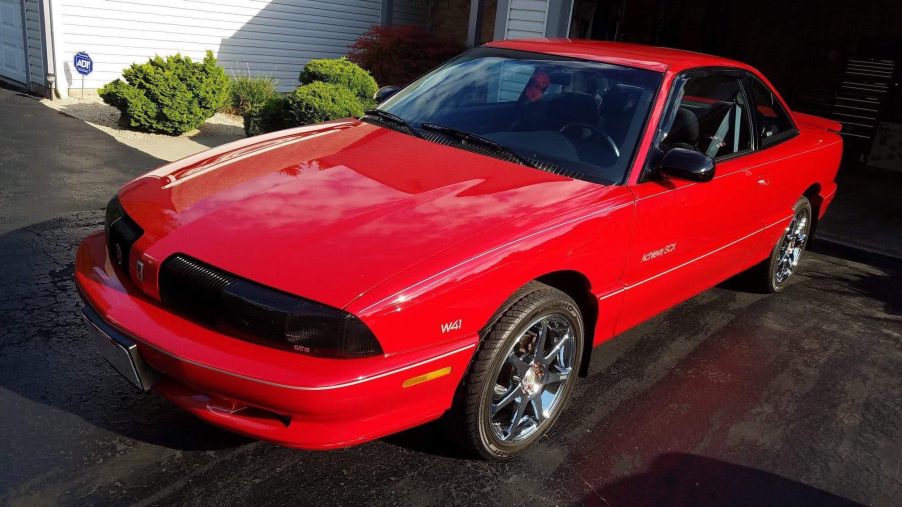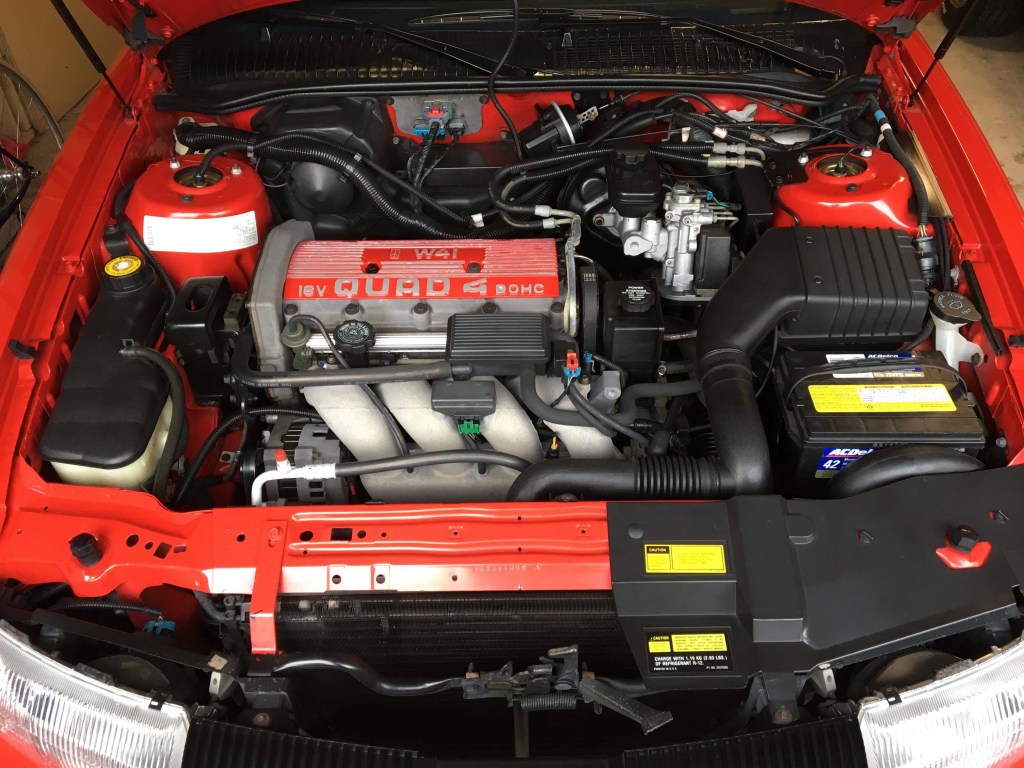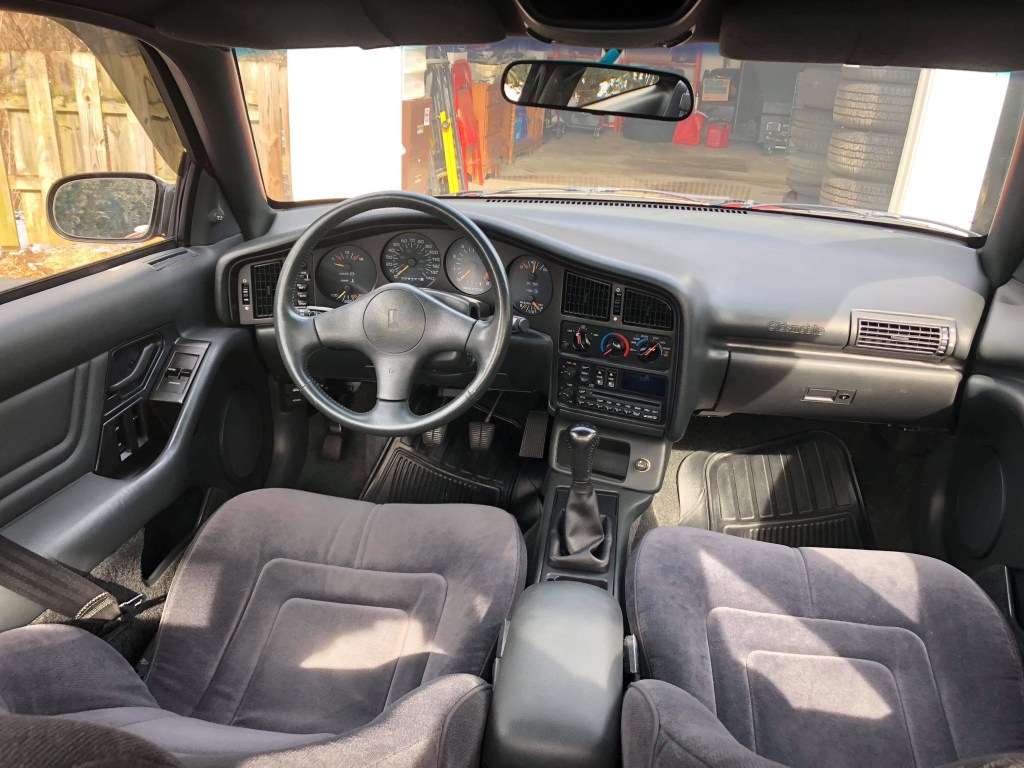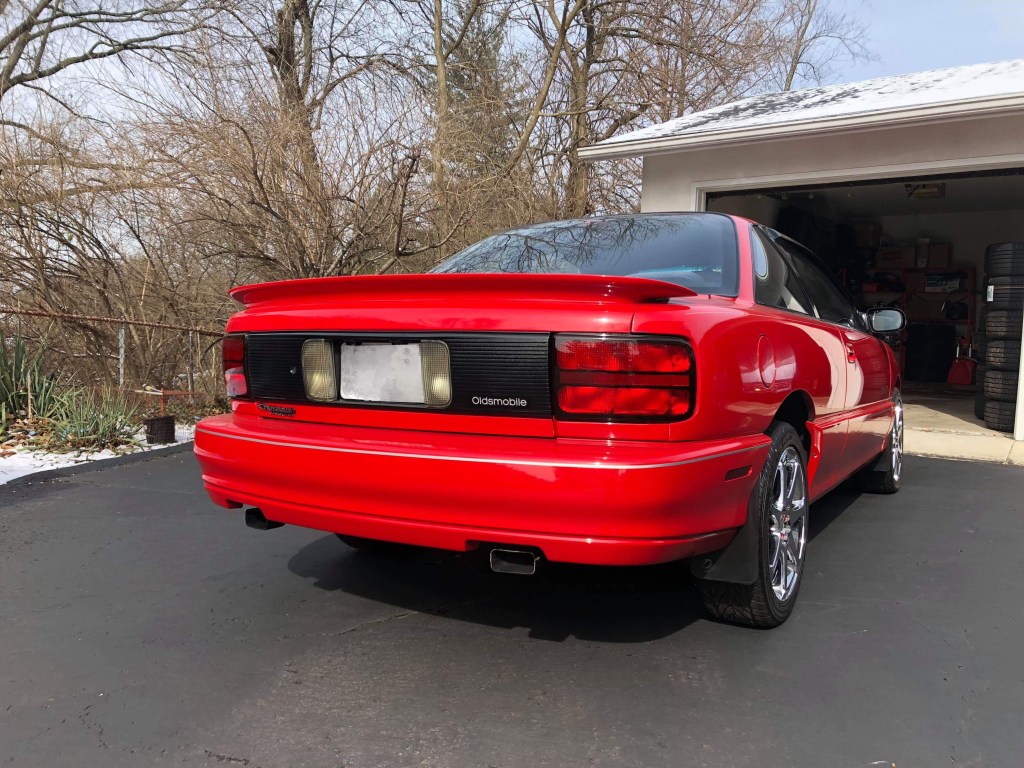
Oldsmobile Achieva SCX: GM’s Secret Track-Ready Pocket Rocket
If you grew up in a middle-class family in the 1990s, it’s very likely you were familiar with General Motors’ N-Body lineup. The compact, front-wheel drive platform was produced from 1985 to 2005 and positioned itself as an upscale alternative to the J-Body at an affordable price.
Featuring a variety of entry-level coupes and sedans, the first generation N-Body platform was headlined by the Pontiac Grand Am, Oldsmobile Calais and Buick Skylark. With the exception of the unheralded Cutlass Calais 442 W41 we reviewed earlier, the segment did little to warrant a second glance from enthusiasts.
However, that narrative began to change in 1992 when the second generation of the platform debuted. The three models’ aging toaster oven shape and most visible tie to its 1980s heritage was now gone. With the new decade underway, the styling was overhauled from the ground up, and each division developed distinctive new sheet metal to give their cars a modern flair.
In the rare
Achieva SC

With a styling cue derived from the legendary 1969-72 Cutlass 442, the aggressive front end is characterized by two black split grilles with the familiar Oldsmobile rocket crested between. In addition, a unique front fascia with integrated fog lights, lower side cladding and dual stainless steel exhaust set the SC apart from lesser trim models.
When the Achieva debuted, Oldsmobile’s surprisingly potent four-cylinder was a secret no longer. Named the “Quad 4” for its four-valve, four-cylinder layout, the 2.3-liter engine was the first dual overhead cam four-banger ever designed by GM. In showroom stock racing, the Quad 4 was quickly making a name for itself in the motorsport world and led Oldsmobile to the 1992 IMSA Firehawk Manufacturers and Drivers Championship.
After undergoing a series of revisions since its debut in 1987, engineers were able to improve performance and reduce the noise, vibration and harshness that plagued the powertrain in its earlier years. The high-output LGO code Quad 4 was standard in the Achieva SC, and made an impressive 180 horsepower and 160 pound-feet of torque. A Getrag designed heavy-duty five-speed manual was the sole transmission offering, as even the best front-wheel drive automatic from GM in the early ‘90s wouldn’t have lasted long at those power levels.

While the SC offered ample performance for its class, it still fell short of being recognized as a true
Achieva SCX ?
Under the hood, the SCX received a special W41 version of the LGO Quad 4 fitted with an upgraded camshaft, higher 7000 rpm redline and lower restriction mufflers. The result was 10 additional ponies for an even 190 horsepower and 160 pound-feet of torque at 5200 rpm, making it the most powerful naturally aspirated four-cylinder engine GM had ever developed. The GM-Muncie built Getrag transmission received a lower 3.94 final drive ratio (3.61 in the SC) and a concentric slave clutch that resulted in quicker acceleration times and a smoother clutch feel.
While the improvements to the engine and transmission were substantial, Olds didn’t stop there. The SCX was fitted with a special FX3 coded suspension, which included a performance-tuned version of GM’s Computer Command Ride electronically adjustable struts and shock absorbers. A larger 30 millimeter front stabilizer bar, twin rear stabilizer bars and a tubular rear axle with a wider track were fitted to reduce body roll, while wider five-spoke, 14 x 6.5-inch cast aluminum wheels with V-rated BF Goodrich Comp T/A tires provided additional grip. Together, these modifications enabled the SCX to devour corners at speeds nobody could imagine in an Oldsmobile.
Appearance modifications were less pronounced, allowing the SCX to fly under the radar as the perfect sleeper. A silver stripe along the lower molding, W41 fender decals, and “Achieva SCX” decals at the leading edge of the doors offered the only clues that this wasn’t your grandfather’s Oldsmobile. The interior featured a revised instrument cluster with a 140 mph speedometer and a tachometer that would register the W41’s higher 7000 rpm redline.

Racetrack Ready
Two different versions of the SCX were available. The air-conditioning equipped C60 RPO code was the box checked for more than 99.9 percent of the 1146 orders in 1992. But for the select few that wanted to drive their SCX straight from the showroom to the racetrack, the heater-only C41 RPO code was the best choice. These cars received a Gleason/Torsen limited slip differential, engine oil cooler, custom baffled fuel tank and supposedly even special Firehawk Series GM developed rods, pistons and valve springs. While they knew the C41 code wouldn’t be a big seller (less than 10 cars were equipped with the option in 1992), it was done purposefully by Oldsmobile to be able to pass these upgrades off as stock modifications in the Firehawk series. Production of the SCX would continue one additional year as 500 SCXs were made in 1993.
By modern standards, 190 horsepower is hardly anything to get excited about. But context is certainly needed to see the full picture. The W41 Quad 4 was simply groundbreaking in its day. Utilizing the same displacement in the 2.3-liter Pinto engine, Ford needed a turbocharger to achieve the same 190-horsepower rating in the 1987-88 Ford Thunderbird Turbo Coupe. Astonishingly, the W41 Quad 4 remained the most powerful naturally aspirated four-cylinder developed by GM for more than two decades. The record was finally broken in 2013 when the larger 2.5-liter LCV Gen III Ecotec debuted in the Cadillac ATS with 202 horsepower.
According to a review from Motorweek, the 1993 SCX could accelerate to 60 mph in the upper seven-second range and complete a quarter-mile in 16 seconds flat. While these brisk times prove the car is no straight-line slouch, the SCX was never intended to be a drag racer. With its


